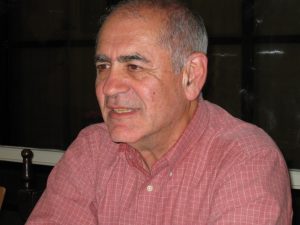The 1st School on Reaction Systems has taken place in historical Toruń, Poland.
Organised by Dr Lukasz Mikulski and Prof Grzegorz Rozenberg at the Nicolaus Copernicus University.
I managed to attend a number of lectures and gave my own lecture on Asynchronous Computation (from the perspective of electronic designer).
Here are the slides:
https://www.staff.ncl.ac.uk/alex.yakovlev/home.formal/talks/Torun-Yakovlev-lecture-final.pdf
Ideas picked up at the 1st School on Reaction Systems in Torun, Poland
Grzegorz Rozenberg’s lecture on Modularity and looking inside the reaction system states.
- Some subsets of reactants will be physical – they form modules.
- Stability implies lattice: a state transition is locally stable if the subsets (modules) in the states are isomorphic. These subset structures form partial order, so we have an isomorphism between partial orders. So, structurally, nothing really changes during those transitions – nothing new!
- Biologists call this “adulthood”. It would be nice to have completion detection for that class of equivalence!
Paolo Milazzo’s talk (via Skype) on Genetic Regulatory Networks.
- Some methods exist in gene regulation for saving energy – say by using lactose (as some sort of inhibitor)
- He talked about sync/async Boolean networks of regulatory gene networks.
Paolo Bottoni on Networks of Reaction Systems.
- Basic model – Environment influences the reaction systems
- Here we consider reaction systems influences the environment
Robert Brijder on Chemical Reaction Networks.
Hans-Joerg Kreowski on Reaction Systems on Graphs.
- Interesting graph transformations as reaction systems.
- Examples involved some graph growth (e.g. fractal such as Serpinski graphs)
Grzegorz Rozenberg on Zoom Structures.
- Interesting way of formalizing the process of knowledge management and acquistioon.
- Could be used by people from say drug discovery and other data analytics
Alberto Leporati on membrane Computing and P-systems.
- Result of action in a membrane is produced to the outside world only whne computation halts.
- Question: what if the system is so distributed that we have no ability to guarantee the whole system halts? Can we have partial halts?
- Catalysts can limit parallelism – sounds a bit like some sort of energy or power tokens
Maciej Koutny on Petri nets and Reaction Systems
- We need not only prevent consumption (use of read arcs) but also prevent (inhibit!) production – something like “joint OR causality” or opportunistic merge can help.

